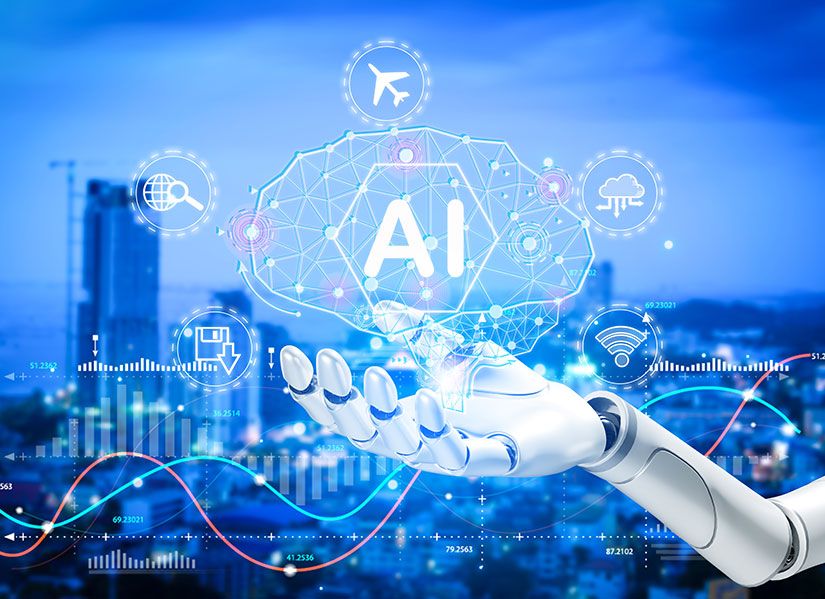
Kim Hellberg, 7 February, 2024
In the ever-evolving landscape of technological advancements, the fusion of Artificial Intelligence (AI) and Machine Learning (ML) has emerged as a transformative force, reshaping industries and redefining the essence of our daily lives. QUT alumnus, Dr. Dakshi Kapugama Geeganage, delves into the realm of government procurement, unravelling the profound impact of AI and ML on various dimensions within this crucial sector.
Have you ever paused to marvel at the whirlwind of innovation happening around us? In various fields, whether in healthcare, finance, or beyond, AI and ML are the ultimate show-stealers. These aren't just buzzwords; they're bona fide game-changers, revolutionising industries and moulding the core of our everyday experiences.
While Natural Language Processing (NLP) is enabling machines to understand and respond to human language, generative AI is fuelling creativity, producing content, codes, art, and music. Image processing algorithms are enhancing the identification of objects, persons, and patterns to an extreme level of accuracy, and predictive Analytics, driven by ML, is not just foreseeing trends but reshaping decision-making across sectors, from anticipating personal preferences to optimising various processes. Chatbots, powered by AI, are providing seamless service, making interactions more efficient and personalised.
One area where these innovations are making a profound impact is government procurement, where the adoption of AI and ML is revolutionising various dimensions, each contributing to a more sophisticated and streamlined process. The main goal of government procurement is to spend taxpayer money wisely and responsibly for greater value, meeting state or country needs. This involves supporting job opportunities, small and medium businesses, local manufacturers, environmental protection, and promoting innovation, diversity, and regional growth. In the evolving landscape of AI and ML use in government procurement, we are advancing decision-making, optimising resource use, increasing transparency, and improving efficiency in public procurement.
Data-driven decision-making
AI and ML enable governments to make informed decisions by analysing the vast amount of procurement data collected from different departments. These technologies facilitate decision-makers in identifying patterns and insights that would be impossible to discern through traditional methods. They play a crucial role in spend analysis across various departments, evaluating supplier performance, monitoring market trends, and more. Data-driven decision-making not only enhances efficiency, but also mitigates risks and ensures the better allocation of public resources.
Predictive analytics
Predicting future needs and trends is crucial for effective procurement. Furthermore, predicting supplier movements and spending in core categories such as medical supplies, general goods and services, and transport allows for better planning. Additionally, forecasting the classification of products and services into globally accepted and standardised categories is beneficial for a more transparent procurement process.
Streamlining procurement processes
AI and ML play a pivotal role in automating routine tasks, which alleviates the burden of manual labour in procurement processes. Another critical aspect involves data refinement and integration, where AI and ML techniques come to the forefront within the realm of government procurement. Government agencies often use different data definitions and templates to characterise their data. The manual cleaning or removal of inconsistent data becomes impractical when dealing with the entire spectrum of government spending. Consequently, ML techniques are applied to develop semantic matching, semi-automated data cleaning, and other approaches. These methods aim to refine, clean, and explore millions of incomplete and inconsistent data records, ensuring a more streamlined and efficient procurement process.
 Enhancing supplier management
Enhancing supplier management
Uplifting small and medium businesses is an integral part of the government procurement process. ML techniques are applied to accurately identify supplier details, especially when information is incomplete. Additionally, these techniques evaluate supplier performance and track supplier geographical movements for a more effective and efficient procurement process.
In conclusion, the exploration of big ideas in artificial intelligence and machine learning has illuminated the path towards revolutionising government procurement. Reflecting on my own journey, the knowledge and skills acquired during my PhD at QUT in the field of Data Science have played a pivotal role in streamlining the procurement process within the Queensland Government. The journey has just begun and as we move forward, the possibilities for positive change are limitless.
Dr. Dakshi Kapugama Geeganage
QUT degree - Doctor of Philosophy (2022)
Do you have a question for Dakshi? You can connect with her on LinkedIn.
